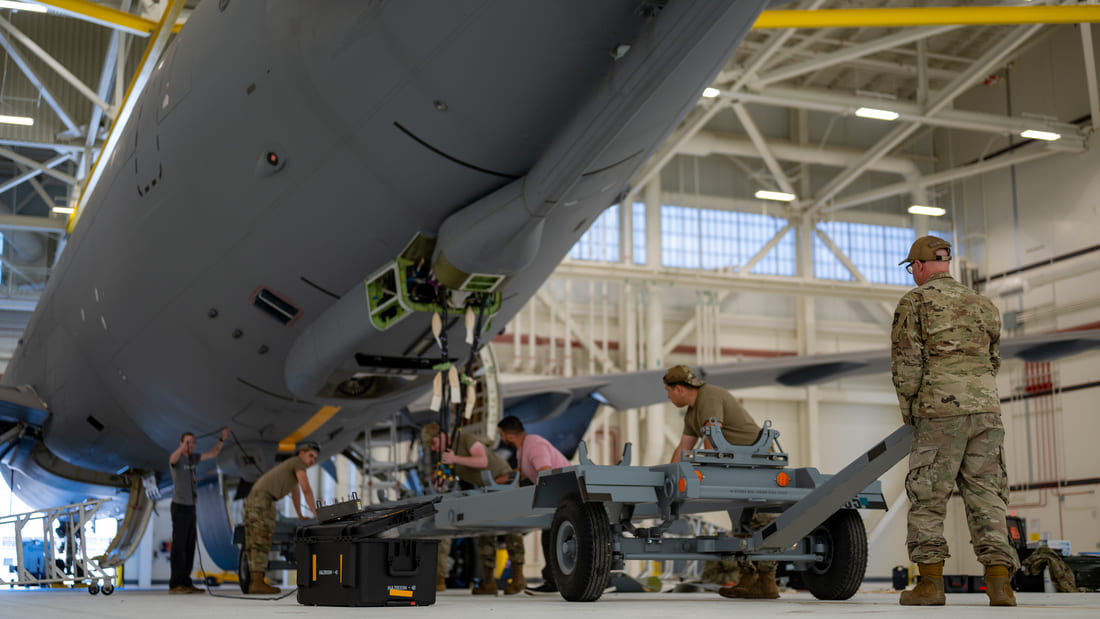The U.S. Air Force on Aug. 25 released three Aircraft Accident Investigation Board reports on the KC-46A. Each cites the same failure: the Pegasus boom stuck in a receiver’s receptacle-“nozzle binding.” Investigators linked the binding to the tanker’s long-standing “stiff boom” issue and to crew actions under breakaway. The mishaps occurred Oct. 15, 2022; Nov. 7, 2022; and Aug. 21, 2024. All crews landed safely. Estimated damage across the three events: about $22.8 million.
Lt. Gen. Rebecca J. Sonkiss, Air Mobility Command’s deputy commander, said the fleet “will sustain our air refueling mission capabilities for decades to come… we do not take these incidents lightly,” noting revised training and guidance and ongoing work with the contractor on long-term fixes. Defense officials said the command has already adjusted procedures and widened the refueling envelope for fighter receivers.
Accident investigation findings
An Air Force board reviewed an Oct. 15, 2022 flight involving a KC-46A from the 305th Air Mobility Wing and an F-15E. During an emergency breakaway, the boom nozzle locked in the Strike Eagle’s receptacle. When the connection released, the boom kicked up and struck the tanker’s tail cone. The board cited a limitation in the boom control system and said the operator inadvertently put radial force on the nozzle. Investigators also found the receiver crew did not account for stiff-boom handling, which requires larger fore-aft thrust inputs to move the telescope in contact. Estimated damage: $8.31 million.
A separate report dated Nov. 7, 2022 covered a sortie with an F-22A. The nozzle is bound in the receptacle during breakaway. Investigators said the boom operator failed to confirm the nozzle had cleared before moving the controls, applying lateral force and causing the bind. The receiver’s rapid forward motion relative to the tanker made it worse. The Air Force wrote off the nozzle; the cost was about $103,000.
On Aug. 21, 2024, an F-15E refueling over the western United States experienced a bound nozzle that released suddenly. The boom surged upward, struck the tanker and began to oscillate. The boom shaft then suffered a critical structural failure, shedding pieces from the aircraft. Crews recovered safely to base with no injuries. Damage was assessed at approximately $14.38 million. An investigation board cited a combination of boom-operator control inputs, the receiver’s high closure rate and an unstable receiver position.
The findings echo themes seen in two 2022 mishaps. Across all three events, investigators pointed to human factors under time pressure and system behavior that left little margin once the nozzle stuck. In the 2022 F-15E case, the KC-46’s Automatic Load Alleviation System attempted to manage forces on the nozzle, but an “uncontrollable state” developed as the boom migrated upward toward the receiver’s tail. In the 2022 F-22A event, a missed cross-check would have confirmed a clean disconnect. The 2024 case added a sharper data point: boom pitch and control-surface deflections spiked as the nozzle broke free, the system annunciated “BOOM INOP,” and seconds later the boom impacted the fuslage.
Investigators also flagged a display and training gap. The high-load cue for the nozzle (“HI-LOAD”) appeared only briefly and was missed while operators executed emergency procedures. Test data and board analysis indicate the alert’s contrast is weak against Remote Vision System imagery and it sits outside the operator’s natural field of view. In addition, the KC-46 boom-operator trainer could not faithfully reproduce a bound-nozzle condition or the HI-LOAD indication, leaving crews without realistic simulator repetitions for this specific failure mode.
Incident snapshots
- Oct. 15, 2022 (KC-46A/F-15E): nozzle bound during breakaway; boom struck tanker tail; system limitation and inadvertent radial force cited; ~$8.31M damage.
- Nov. 7, 2022 (KC-46A/F-22A): nozzle bound; operator inputs before confirming a clear nozzle and fast receiver closure noted; ~$103K damage.
- Aug. 21, 2024 (KC-46A/F-15E): nozzle bound; release drove boom upward; structural failure and debris; ~$14.38M damage.
Fighter refueling syllabus changes and a wider 10-foot envelope
After the boards concluded, Air Mobility Command tightened technique and widened geometry. AMC directed additional training for fighter receivers and boom operators, and expanded the refueling envelope from six feet to ten feet. The added spacing increases separation between tanker and receiver and gives operators a longer reaction window during disconnects and breakaways. The command characterizes the change as a margin builder for visual cues and timing.
Separately, a July 8, 2025 boom-damage event-widely discussed across the community-remains under investigation. The crew diverted safely, and the service acknowledged nozzle binding as a factor under review. Command officials said further mitigation steps may follow once that report is released.
The updates are being implemented while units continue worldwide taskings with receivers that vary widely in mass, intake location, and receptacle geometry. Fighter profiles often feature fast closure rates and dynamic throttle work near disconnect limits; the extra four feet and reinforced training are aimed squarely at that regime. Aircrews now devote more time to recognizing subtle binding cues, maintaining neutral control inputs when binding is suspected, and executing cleaner, pre-briefed breakaway choreography between both cockpits.
Boom telescope actuator redesign targeted for 2026; vision upgrade now 2027
Engineering work on the “stiff boom” fix centers on the boom telescope actuator and its control logic. Service officials continue to target 2026 to field the hardware update across the fleet, with line-fit and retrofit sequencing to follow. Industry sources say the actuator supplier and Boeing encountered qualification delays earlier in the program, complicating test readiness and pushing risk into later phases. Program documentation from late 2023 also cites compliance challanges and schedule pressure at the supplier level.
The KC-46’s Remote Vision System is on a separate track. Crews are still flying with the original system plus software enhancements, while the full “RVS 2.0” package has slipped again; the Air Force now points to summer 2027 for fleet fielding. The boards’ findings on alert visibility and field-of-view placement highlight why that upgrade matters at the edge of the envelope, particularly with small receivers and strong sun angles.
Taken together, a 2026 boom-actuator redesign and a 2027 vision overhaul set up a staggered retrofit wave. Units will sequence downtime around depot availability, crew training and operational windows. Fleet managers will also have to tighten configuration control, as mission risk varies across jets with mixed hardware and software baselines. The Air Force has signaled it will maintain operational tasking while burning down Category-1 deficiencies; the envelope expansion and syllabus updates are intended to cover that near-term gap.
Fighter receivers, simulator limits, and the pending July 2025 case
The boards place greater risk on fighter receivers than on heavy airlift refuelings. The A-10 case remains instructive for a different reason: thrust-limited receivers can’t always overcome boom stiffness during contact. As a result, the service has long restricted A-10 refueling with the KC-46 until the actuator fix is fielded. Fast jets introduce another set of hazards. Rapid closure inside the envelope can compress the boom telescope and set conditions for binding unless both crews stabilize and execute a clean disconnect.
Training devices are a key factor. The KC-46 boom-operator trainer could not replicate a true bound-nozzle scenario or display the full warning stack, which blunted muscle memory for a rare but consequential failure. The boards recommend higher device fidelity, clearer guidance on neutralizing inputs once binding is suspected and tighter alignment across multi-command manuals. Commanders are expected to drive those changes through formal training units and operational conversion courses.
The July 2025 event will matter because it occured after AMC widened the envelope and updated training. If that report documents the same sequence-binding, late cue recognition, strong control input, followed by boom oscillation – another round of technique refinements is likely, along with potential advisory limits for certain fighter pairings. Current mitigations reduce near-term risk but a residual hazard remains during rare, high-stress disconnects until the actuator and vision retrofits are in place.
REFERENCE SOURCES
- https://www.airforcetimes.com/air/2025/05/07/kc-46-vision-system-upgrade-slips-to-2027-three-years-behind-schedule/
- https://www.mcchord.af.mil/News/Article-Display/Article/4284888/press-release-kc-46a-aircraft-accident-investigations-released/
- https://www.afjag.af.mil/LinkClick.aspx?fileticket=VdjY_tewvlc%3D
- https://www.afjag.af.mil/LinkClick.aspx?fileticket=jVdI2F8xy5g%3D
- https://www.afjag.af.mil/LinkClick.aspx?fileticket=TpOHlb9P38I%3D
- https://aviationweek.com/defense/multi-mission-aircraft/us-air-force-investigations-highlight-kc-46-boom-deficiency
- https://www.defenseone.com/threats/2025/08/refueling-accidents-tied-troubled-kc-46-boom-investigations-find/407693/
- https://www.airandspaceforces.com/kc-46-boom-blamed-for-3-refueling-mishaps/
- https://www.esd.whs.mil/Portals/54/Documents/FOID/Reading%20Room/Selected_Acquisition_Reports/FY_2023_SARS/KC-46A_MSAR_Dec_2023.pdf



